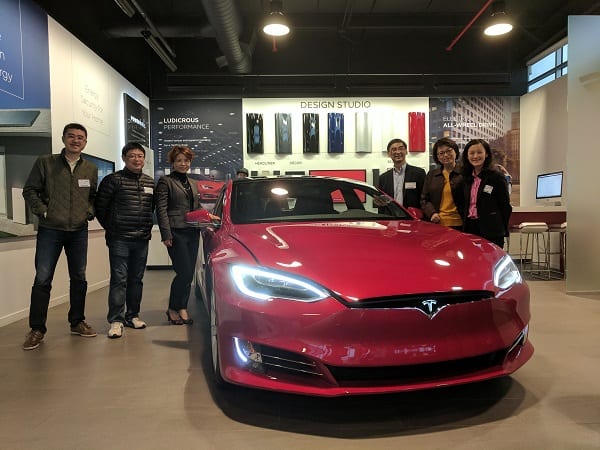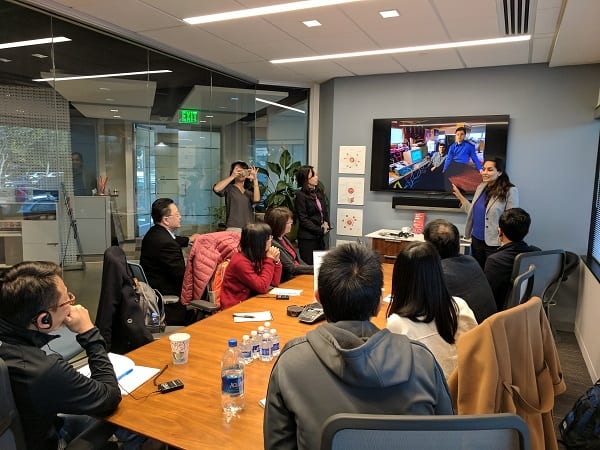Food packaging manufacturer Tetra Pak describes innovation as “a mainstay” of its survival and growth. And nearly 70 years on from its founding, Tetra Pak is among the world leaders in its industry. Tetra Pak’s commitment to discovering new ideas extends to running R&D and innovation centers across the globe. They also have an “open-door policy” for inventors who want to submit projects for assessment and possible development and support from the company.
But Tetra Pak does not stop there. A vital part of Tetra Pak’s strategy is visiting Silicon Valley to learn about new technologies and trends. Three high-level delegations from Tetra Pak’s China office came to the tech hub of Silicon Valley to experience our immersion programs.
Tetra Pak wanted its executives to see the latest technologies at work as well as learn about the mindset of the entrepreneur. Thinking like an entrepreneur means being committed to rapid experimentation and inexpensive prototyping of new products. It requires pivoting into new directions when things go wrong. For big, established companies doing those things can be a challenge.
In a presentation, Johan Nilsson, vice president of services and quality, explains that the success of Tetra Pak’s digital journey depends to a large extent on increasing understanding within the company of the capabilities of today’s technologies.
“Our experience is that our imagination of what can be done is the biggest hindrance,” he said. “We don’t understand these technologies well enough. So we can imagine certain things, but with AI and these types of technologies you just have to take away a lot of these boundaries you have.
Things that you could not imagine before are all of a sudden possible. So how you create this open mind to imagining things working differently is very important.
As the Tetra Pak executives found out, there is nothing better to open the mind to the world of digital possibilities than a trip to Silicon Valley.
Automation in manufacturing
While in Silicon Valley Tetra Pak’s teams took a Tesla test drive and also visited the carmaker’s factory. Among the world’s most advanced automotive plants, the Tesla factory is the workplace of some 3,000 employees. It also houses 160 robots which handle a variety of tasks: from painting cars to installing windshields. One of Tesla’s priorities is For Tesla, to use using machines in ever more sophisticated ways to build vehicles. is a priority. As Gilbert Passin, the company’s vice president of manufacturing, has said: “We constantly try to improve process efficiency. We want to push the boundaries of what can be done by robots versus humans. It’s a constant evolution.”
Seeing Tesla’s facilities opened the eyes of the Tetra Pak executives to the full potential of automation in manufacturing. This was of value to them because although Tetra Pak has already taken steps on the path toward digital transformation, it admits that, just like its industry as a whole, it still has some way to go.

“Looking at different industries and the extent to which digitalization is embedded in them…we see that food and beverage is pretty far down on the list,” says Nilsson.
Visiting the Tesla factory tied in with Tetra Pak’s ongoing aim to learn from others as a means to accelerate its own transformation and improve the overall situation in its industry.
As the company’s global director for digitalization Ilker Gunder explains, “In the context of the food and beverage industry there’s a huge opportunity for us. It’s all about learning and benchmarking and partnering with others who have done the journey. It’s about taking the learnings from other industries and bringing them into our context.”
Thinking anew
A big part of Tetra Pak’s digital strategy is to engage its workforce on the transformation journey. That includes top management, which is why apart from seeing the practical applications of robotics at Tesla, Tetra Pak’s SVIC immersion program also focused on cultivating an entrepreneurial mindset.
This was the key theme of visits to Airbnb, Google and Facebook, although the executives did also learn about each company’s unique products and services. But the overarching goal was to understand how these tech giants nurture and maintain innovative corporate cultures, and how this upholds their strong market positions.
The view that a company’s culture is crucial to its ability to adapt and therefore sustain success over time has been well expressed by Airbnb CEO and co-founder Brian Chesky, who writes in a blog post, “culture is what creates the foundation for all future innovation. If you break the culture, you break the machine that creates your products.”

For the Tetra Pak executives, seeing intrapreneurship – entrepreneurship applied within a company – at Airbnb, Google and Facebook gave them the blueprints to apply that thinking to their own teams.
That feeds into Tetra Pak’s goal as an organization to change the mindset of its employees so they become independent innovators, invested in making digital transformation happen. And that, in the end, is just as important – if not more so – than buying up a hot startup or technology.
“This is a fun and exciting journey,” says Nilsson. “You are creating the future. When you get that combination right it’s very easy to engage people in the journey.
“People love to do these things and very often that’s the best way of getting real, tangible results out of using technology: when people embrace it and do it themselves.”